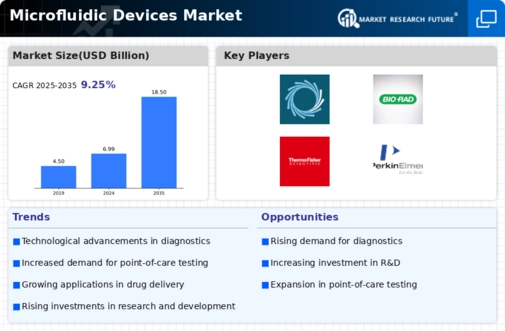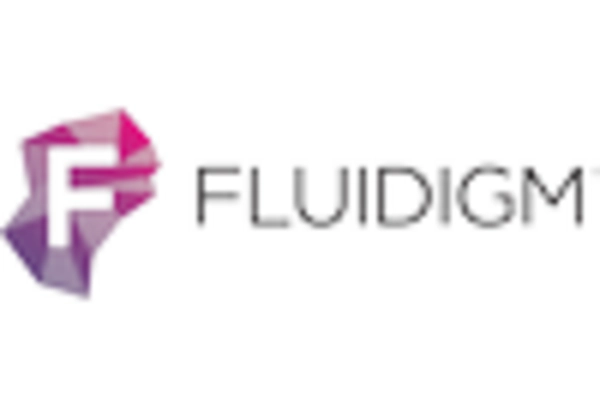Market Analysis
In-depth Analysis of Microfluidic Devices Market Industry Landscape
The microfluidic devices market is experiencing significant growth, driven by the widespread adoption of microfluidic technology across various industries. Microfluidics involves manipulating small volumes of fluids, typically on the microliter or nanoliter scale, and is finding applications in fields such as healthcare, life sciences, and diagnostics. Rapidly growing application areas of microfluidic devices in the biomedical and clinical fields are redefining market dynamics. Such devices allow the exact control and analysis of biological samples making it possible to perform operations as DNA sequencing, cell sorting, or point-of-care diagnostics. Microfluidic platforms offer a great deal of convenience and as a result innovation is thriving in the field of healthcare. One of the increasingly sought-after technologies in the market is lab-on-a-chip (LOC), the subsets of microtechnology enabling miniaturisation has emerged only recently as a new subset in microfluidics that combines and integrate multiple laboratories functions onto a single chip. The advantages for LOC devices come as small size and automaticity; they can be portable from drug discovery to environmental detection. Shifting attention toward point of care diagnosis is influencing market trends and dynamics. A critical role of microfluidic devices today is in constructing point-of-care devices that deliver rapid and portable diagnostics, necessitating real-time results, in a diverse range of applications. This presence is driven by the necessity of timely and desegregation testing in healthcare organization. A key player in the market for microfluidic devices is largely contributed in the CAD/CAM industry, the manufacturing, military, pharmaceutical, and biotechnological sectors. These tools simplify composting in pharmaceutical discovery and progression, while in term, provide benefits like reduced sample volumes, large number of samples processed, and high accuracy in assays. Apart from facilitating quick drug testing and screening, the listed elements are as well contributory to its efficiency. The developments in material sciences are contributing in microfluidic devices. The utilization of new materials that have particular qualities for example optical clarity and biocompatibility expand the effectiveness of microfluidic stages. Such continuous innovation meets the varying needs of different applications. The market in the area of organ-on-chip technology, a microfluidic focused modality, is notable. These devices mimic physiological organ environments for virtual drug testing as well as toxicity studies. Organ-on-chip platforms lead to the minimization of animal experiments and increase the accuracy of preclinical results. Among a variety of microfluidic devices market’s major consumers are the academic and research institutions. The diversity of microfluidic platforms is suitable for various fields in research application domains such as the cell biology, microbiology and materials science. The ease of use of these devices helps essentially popularity of that in department of sciences Collaborations and partnerships are made by microfluidic device manufacturers, research institutes and industry players, and the market dynamics are shaped by these phenomena. Through collaborative initiatives in conducting research, capacity of the research is increased, innovative developments are geared and invention and development of applications of various microfluidic technology do take place. The miniaturization of involved analytical processes as well as the cost effectiveness created by microfluidic devices are major market development factors. Challenges related to standardization and the seamless integration of microfluidic devices into existing workflows are considerations in market dynamics. Efforts to establish industry standards and improve compatibility with other technologies are ongoing to ensure a smoother adoption process.

















Leave a Comment